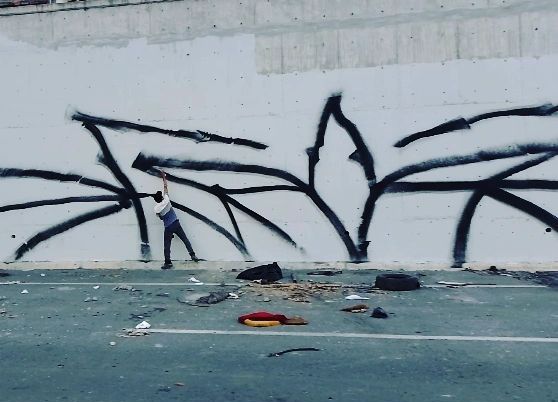
Essay
Broken lines: a conversation with Kooperativa Rayenari, Silvia Mendirichaga and the diagonals of Luis Figueroa
by Christian Camacho
Reading time
8 min
The Land of the Rhombus, the Hook and the Blue Mountains
— Kooperativa Rayenari
I must admit that I often find myself disoriented by the signs, the anonymous drawings, and the lines that intersect within spaces. Geometric hills, roots, and hairs that can be read, penetrating the earth, walls, and screens to emerge on the other side. From the cilantro stems on the cutting board to the built and destroyed environment of the Northeast that, despite its harsh climate, has warmly welcomed me. Over four years, Monterrey has focused my attention on certain sites whose encounters are entirely local, elements of its cultural production that precisely appear right here and now, and are uncommon or entirely absent elsewhere. In this text dedicated to the affairs and people of this city, I continue my curiosity about signs, writing, and drawing, as well as their relationship with the landscape and artistic production.
I believe that names and strokes possess a secret structure that operates in depth. A strange tunnel, a letter like a crack in a sewer, whose breath deposits ancient matter on our hands, our magnetic supports and our delicate corneas. I think of my own name, of common sonority; its only mystery seems to be the letter "H" between the "C" and the "R." Without the phoneme, without the "CH" sound, it’s more like the wall from which it is said to originate. As if it were scaffolding, it is the infrastructure of my name. Old technology in disuse, I feel that it was not made for mouths but for eyes. Its non-sonority somehow sustains the time to come from a reading, perhaps a diacritical one, to know what Christo means, with or without an "H," in a Spanish-speaking territory.
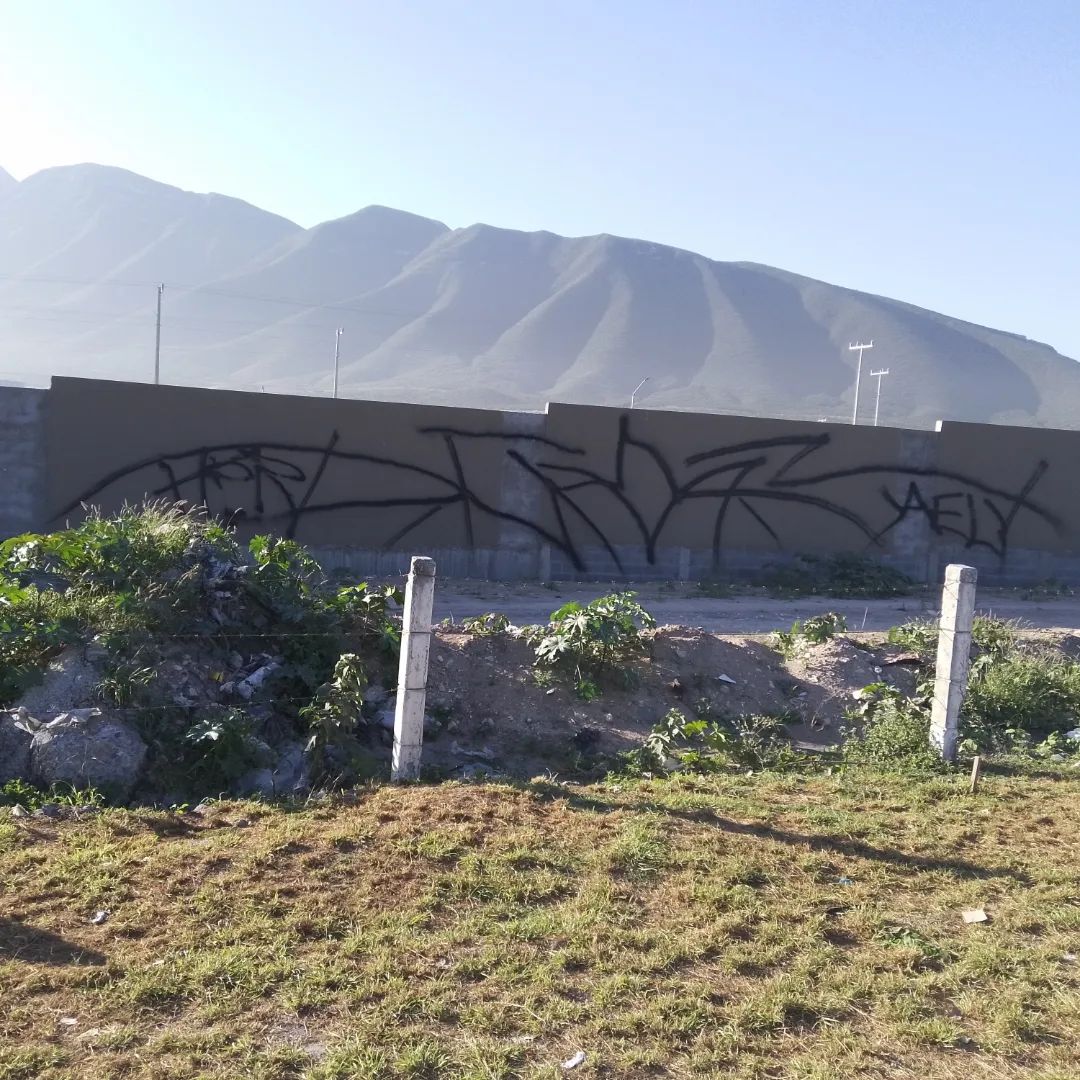
On the other hand, in Monterrey, numbers are numerous and illuminated; the sun bathes the rock, metals, and concrete that serve as support for the ganchos of the graffiti and urban artists of the city. The "gancho," or “hook”, as one of the available graffiti traditions recognized nationally and internationally, has appeared almost exclusively in Monterrey and its metropolitan area for approximately 30 years. The discovery of this form of tagging in my current municipality of Santa Catarina eventually led me to meet Nydia Cristina Prieto and Cristóbal López from Kooperativa Rayenari. Among their investigations are the imaginations and social representations of local graffiti, the correspondences between prehistoric art and folk art, as well as the various visual legacies linked to the indigenous peoples of the Northeast; an attentive and generous work that branches out into the multiple alliances they have made with the study and dissemination of the expressions of their territory.
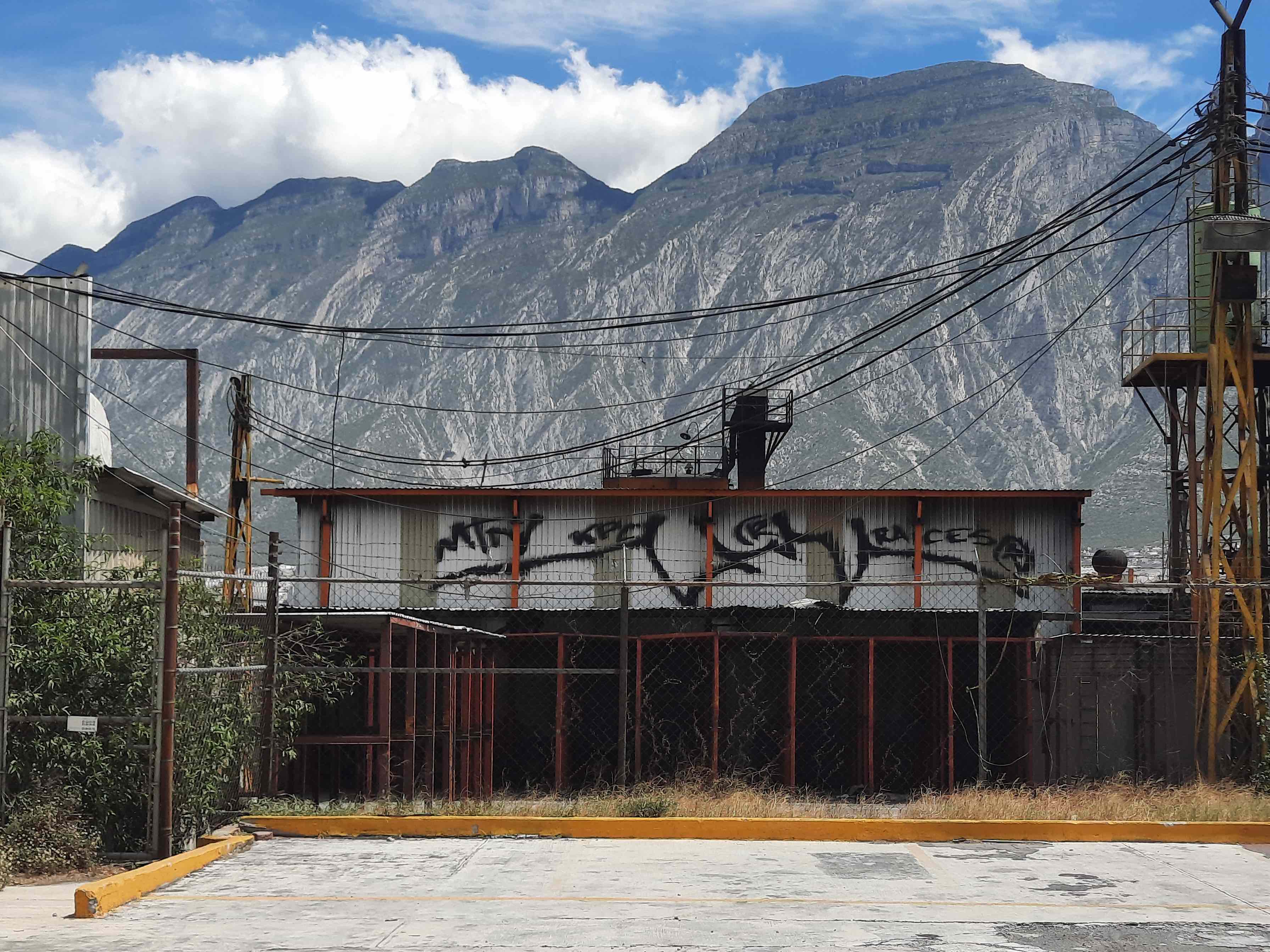
For Nydia and Cristóbal, it is possible to isolate specific characteristics of the gancho's writing system. In one of their publications, we read a very comprehensive list where the gancho is "a symbol that starts from one, two, or three stylized letters and is made with quick strokes of a single color,at once,, which implies an integral movement of the entire body of the performer. Making a gancho is practically a choreography that can include running, jumping, stretching, climbing, etc. [...] They have as their center of gravity a triangle, rhombus, or spiroloid (concentric circle or semicircle), as well as the fusion of some of these figures; that is, the extension or mutation of the same. [...] It has human scale, that is, the average height of a young metropolitan person (1.60m). However, the urban density of Monterrey (for example, the diversity and extension of overpasses) allows its horizontal dimension to extend on a large scale (from five to eight meters or more)."*1
Passing through these ideas throws us into an intermittent corridor between writing with a specific meaning (which can be encrypted to evade authorities), the figures of its visible dimension, and its context as the subject and object of the landscape.
For Kooperativa Rayenari, the gancho is not just one more vector of the currently available graffiti style, often directly associated with the United States as well as industrial cities of the global North, but instead it’s a radiation of the forms situated in the Mexican Northeast: "The fundamentalist claim of hip-hop culture that graffiti is an organic component of rap is just empowerment with global overtones that leave aside many other types of graffiti and their relationship with other music and contexts. [...] for example, the metropolitan style of tagging known as ganchos was closely linked to Colombian music, especially cumbia."*2
In Monterrey, this manner of making blades and nourishing the gaze which is echoed in the jagged line of the hills is not found exclusively in graffiti practices.
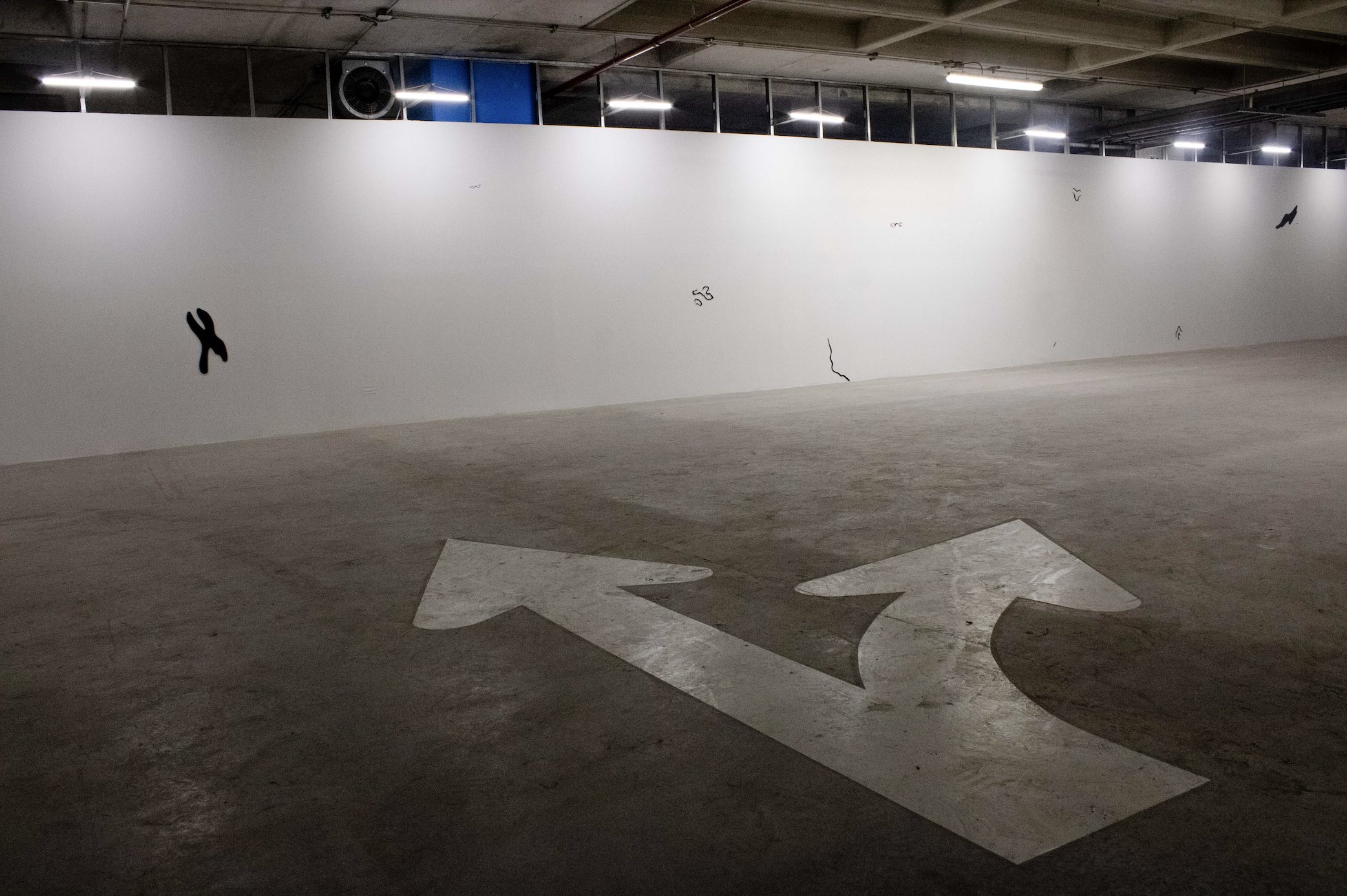
During the last semester of work at the University of Monterrey, I was able to advise the graduation project of a young artist named Silvia Mendirichaga. Titled "~," literally the tilde of the "ñ," the project culminated in an exhibition in the parking lot of Plaza Arboleda, where the FAMA art fair usually takes place. In a truly fragmented repertoire with great diversity of scales, the laser-cut shapes that Mendirichaga employs appear as anomalous symbols stemming from the ripple of the voice in WhatsApp messages, the handwriting of familiar people, the curvatures of the strata in the cut hill of her neighborhood, etc. Among her symbols, some are several meters long, while others fit in the palm of the hand. The discreet interaction that exists with the space surrounding each form is significant, as well as the series of sound and semantic relationships that Mendirichaga has established through an alternative approach to the idea of a title. Pronounceable and unpronounceable, both paths extend the shapes into a less solid dimension, not dissimilar to the almost algorithmic encryption of the gancho.
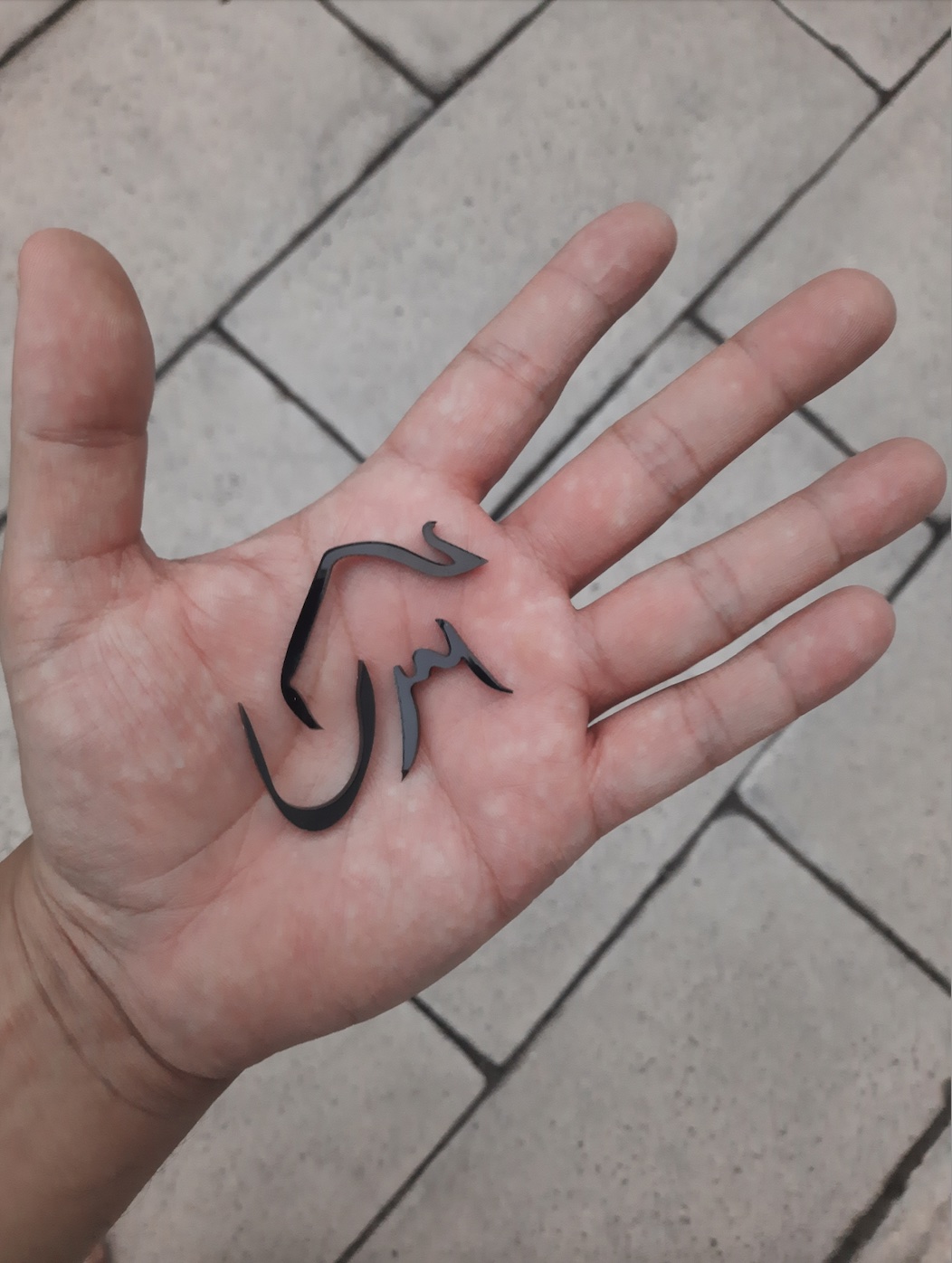
Finally, I would like to return to Luis Figueroa's painting in terms of the vectors that inhabit its interior. Apart from its color, I am interested in the diagonal directions that traverse the plane, often using the rhombus, torso-head, cross, and intersection, which in their arrangement with the sacred and their relationship to 90° are never the same. I have mentioned at other times the frontality in painting as a catalyst for the unity of figurative frameworks, no matter how complex they may be. I believe that Luis is very clear about it: "What interests me about the rhombus... is that it seems to offer the opportunity to have no weight. The torso has weight, but the rhombus does not necessarily. I am interested in a geometric figure that does not have weight until it has color."*3

The ganchos, the figures of Silvia Mendirichaga, and the compositions of Luis Figueroa accompany me in a meditation on the stroke that precedes even color; just as in Mendirichaga's words, there is an alliance between writing and the monochromatic, this imagination of the line does not necessarily possess the coordinate of illumination. Even in pursuit of the shadow, the graffiti artists from Monterrey often avoid colors and positions where "the sun would eat them up"*4, in Luis's case, the preamble to colored heights.
The labyrinth of symbols that exists for me in Monterrey is a constant source of questioning the certainty of scale and meaning, the reading of the central and the nomadic, the micro and the macro. From the technology of tips represented in the tools of prehistoric art*5 to the strange correspondence of the gancho with the great horizontality of industrial parks, there are forms that are not just one single style, but rather a hidden drive. In Kooperativa Rayenari’s research, an unconscious geometric collective, the eve and posterior position of a sort of technical interference that like no other ghost in the machine traverses the infrastructure of the Northeast.
Translated to English by Sebastián Antón-Ojeda
*1: Prieto, Nydia; Cristóbal López. Rayas, apañes, ganchos. Los trazos locales de la canción y el caminar, Kooperativa Rayenari, p.6.
*2: Prieto, Nydia; Cristóbal López. Representaciones personales, primitivas e históricas del grafiti, Kooperativa Rayenari, pp.17-18.
*3: Interview with Luis Figueroa, June 26, 2023.
*4: Prieto, Nydia; Cristóbal López. Rayas, apañes, ganchos. Los trazos locales de la canción y el caminar, Kooperativa Rayenari, p.5.
*5: Here is a nod to both the conversation with Kooperativa Rayenari and the title of Jorge G. Balleza's show Tecnologías Rupestres at Sitio (2022), a collaborative project with Adan HPR that I unfortunately know only from photographs and texts.
Published on August 3 2023